Address
304 North Cardinal
St. Dorchester Center, MA 02124
Work Hours
Monday to Friday: 7AM - 7PM
Weekend: 10AM - 5PM
Address
304 North Cardinal
St. Dorchester Center, MA 02124
Work Hours
Monday to Friday: 7AM - 7PM
Weekend: 10AM - 5PM
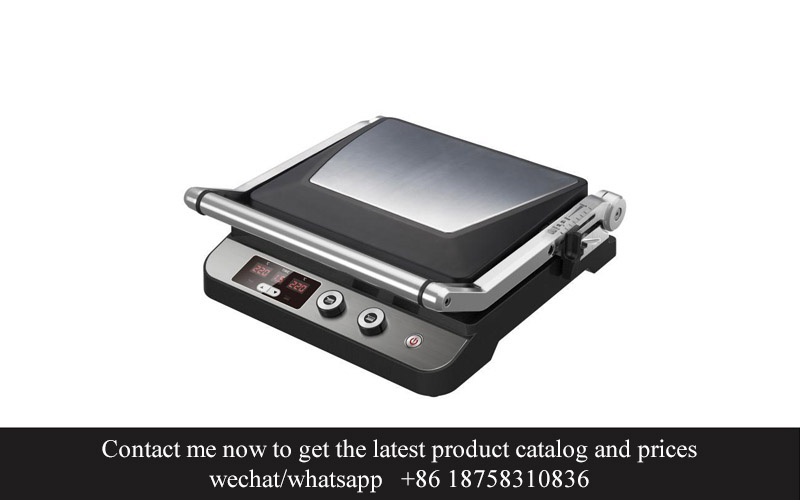
As the landscape of kitchen appliance retail shifts, the role of packaging in the private label market has become increasingly significant. It’s not just about protecting the product; it’s about creating a brand identity, communicating values, and ultimately, influencing consumer purchasing decisions. In this ever-evolving industry, we delve into the challenges and opportunities that lie ahead for private label kitchen appliance packaging.
The market landscape for kitchen appliances has been witnessing a significant shift, with private label brands emerging as a formidable force. Consumers are increasingly turning to these budget-friendly options, and the reasons are as varied as they are compelling.
Private label kitchen appliances are those that are manufactured by one company but sold under another company’s brand name. This business model has seen a surge in popularity, particularly in the wake of the global economic downturn. As consumers seek value and affordability, private label brands are stepping up to the plate with innovative solutions.
One of the key factors driving the rise of private label kitchen appliances is the perception of quality. Despite being more affordable than their branded counterparts, these appliances are often held to the same stringent quality standards. This has led to a growing confidence among consumers that they can get a good product without the premium price tag.
The packaging of private label kitchen appliances plays a crucial role in this success story. It’s not just about protecting the product during transit; it’s about creating a first impression that resonates with the consumer. Smart, attractive packaging can make all the difference in a market where price is a significant factor.
Innovative designs in packaging have become a hallmark of private label kitchen appliances. Brands are investing in eco-friendly materials, sustainable practices, and eye-catching graphics to stand out on store shelves. These packaging solutions not only appeal to environmentally conscious consumers but also enhance the overall brand image.
The convenience factor cannot be overstated. Private label brands are recognizing that consumers value ease and efficiency. Packaging that is easy to open, transport, and recycle is becoming more common, reflecting a shift towards user-friendly designs.
Moreover, the customization of packaging is another trend gaining traction. Some private label brands are offering packaging that can be personalized with the consumer’s name or a special message, creating a sense of exclusivity at a fraction of the cost of branded alternatives.
The role of technology in packaging is also evolving. QR codes and augmented reality (AR) are being integrated into packaging to provide consumers with additional information about the product, its features, and even its environmental impact. This interactive approach not only educates but also engages the consumer, fostering a deeper brand connection.
As the market for private label kitchen appliances continues to grow, so does the competition. Brands are constantly seeking new ways to differentiate themselves. This has led to a proliferation of unique features in packaging, such as modular designs that allow for easy upgrades or replacements of parts.
Another significant aspect of the rise of private label kitchen appliances is the accessibility of these products. With the expansion of online shopping, consumers can now easily compare prices and features from the comfort of their homes. This ease of access has democratized the market, making high-quality appliances more attainable for a broader segment of the population.
Private label brands are also capitalizing on the trend towards healthier living. Packaging that highlights the appliance’s ability to help consumers prepare nutritious meals or manage their kitchen waste more effectively is becoming a selling point. This focus on health and wellness aligns with the broader shift in consumer values.
In conclusion, the rise of private label kitchen appliances is a multifaceted phenomenon. It’s driven by the quest for affordability, the importance of quality, the influence of packaging design, and the integration of technology. As these brands continue to innovate and meet the evolving needs of consumers, it’s clear that they are here to stay, reshaping the kitchen appliance industry one product at a time.

Private label kitchen appliances have gained significant traction in recent years, and with this surge comes a deeper understanding of the importance of packaging in this niche market. The packaging of private label kitchen appliances plays a crucial role in shaping consumer perception and driving sales. Here’s a closer look at what makes private label kitchen appliance packaging unique and effective.
The packaging for private label kitchen appliances is often designed to be functional yet stylish, ensuring that it not only protects the product during transit but also catches the eye of potential buyers. This dual-purpose approach is essential, as it reflects the brand’s commitment to both quality and aesthetics.
Color schemes and logos are carefully chosen to align with the target demographic, making the packaging not just a container but a visual representation of the brand’s identity. The use of vibrant colors or a minimalist design can evoke different emotional responses, from a sense of trust and reliability to modern and cutting-edge innovation.
One of the key aspects of private label kitchen appliance packaging is its functionality. The packaging must be durable enough to withstand the rigors of shipping and handling, yet also easy to open and close. This balance ensures that the product arrives in perfect condition while still being convenient for the consumer to use.
Another important consideration is the inclusion of essential product information. Clear and concise labeling, with easy-to-read fonts and relevant details such as dimensions, features, and care instructions, is crucial. This not only helps the consumer make an informed purchase but also serves as a tool for customer service after the sale.
Innovative packaging solutions are becoming increasingly popular in the private label kitchen appliance sector. Eco-friendly materials, such as recycled paper or biodegradable plastics, are being used to appeal to environmentally conscious consumers. Additionally, some brands are experimenting with modular packaging designs that can be repurposed or easily recycled, further enhancing their green credentials.
The design of private label kitchen appliance packaging also needs to cater to the e-commerce market. With more consumers shopping online, packaging must be visually appealing on screen as well as in person. High-quality images and detailed descriptions are often used to showcase the product, but packaging design plays a pivotal role in conveying the brand’s image and value proposition.
Personalization is another trend gaining momentum in private label packaging. Brands are finding ways to offer customized packaging solutions that cater to specific consumer preferences or market segments. This could range from personalized branding to packaging that reflects cultural or seasonal themes, creating a more engaging and memorable shopping experience.
Security is a critical factor in packaging for private label kitchen appliances, especially for high-value items. Advanced packaging technologies, such as anti-theft labels or tamper-evident seals, are employed to protect the product from theft or tampering, ensuring that the consumer receives the item in the same condition as when it left the warehouse.
Sustainability is a driving force behind the evolution of private label kitchen appliance packaging. As consumers become more aware of their environmental impact, brands are under pressure to reduce waste and minimize their carbon footprint. This shift has led to the development of packaging that is not only recyclable but also made from renewable resources.
Lastly, the packaging of private label kitchen appliances must be adaptable to various marketplaces. Whether it’s a large retail store or a small boutique, the packaging should be versatile enough to fit different shelf sizes and display requirements. This adaptability ensures that the product maintains its appeal and visibility across multiple sales channels.
In conclusion, the packaging of private label kitchen appliances is a complex and multifaceted aspect of the industry. It must balance functionality, aesthetics, information dissemination, sustainability, and adaptability to meet the demands of today’s consumers. As the market continues to evolve, so too will the role of packaging in shaping the success of private label brands.
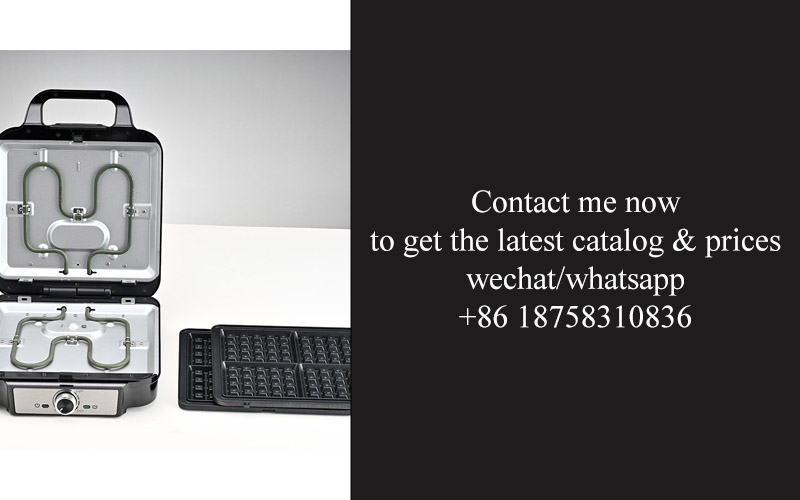
Private label kitchen appliances have become a significant part of the market, offering consumers affordable and often high-quality options. One element that plays a pivotal role in this success is the packaging itself. Let’s delve into the multifaceted role of packaging in the private label market.
Packaging serves as the first point of contact between a product and its consumer. It’s not just a container but a silent salesman. The design, materials, and information provided on the packaging can shape the perception of the product, often influencing whether it will catch the consumer’s eye on the shelf or not.
Visual appeal is crucial. Private label brands often rely on eye-catching designs to compete with well-known brands. The use of vibrant colors, clear product images, and engaging graphics can make private label appliances stand out. This is especially important in a crowded marketplace where competition is fierce.
Informational clarity is also vital. Packaging needs to clearly communicate the product’s features, benefits, and usage instructions. Private labels often need to overcome the perception that they are less reliable than name brands, and detailed packaging can help build trust by providing consumers with the knowledge they need to make an informed purchase.
Sustainability has become a major concern for many consumers. Private label packaging that emphasizes eco-friendly materials and practices can resonate strongly with this audience. Brands that use recyclable or biodegradable materials can attract environmentally conscious shoppers who are looking for sustainable kitchen appliances.
Packaging is also a key factor in maintaining product quality and ensuring safety. It protects the appliance from damage during shipping and storage, which is particularly important for fragile items like cooktops and ovens. The packaging design must consider how the product is handled, transported, and eventually used in the consumer’s home.
Another aspect of packaging is its role in brand consistency. Private label brands that maintain a cohesive look across their packaging can reinforce their brand identity. Consistent branding helps consumers recognize and remember the products, making repeat purchases more likely.
Marketing messages are another layer that packaging adds to the private label market. From promotional offers to product endorsements, packaging provides a platform for brands to communicate additional value propositions. This can include anything from highlighting energy efficiency to promoting extended warranties.
Packaging can also impact the perceived value of a product. The way a private label appliance is packaged can influence how much the consumer believes they are getting for their money. High-quality, sturdy packaging can make a consumer feel as though they are receiving a premium product.
Furthermore, packaging can serve as a form of social proof. Reviews and testimonials printed on packaging can boost confidence in the product, especially when positive feedback is highlighted. This is a subtle but effective way to leverage consumer trust without the need for expensive advertising campaigns.
The size and shape of packaging also matter. For private label kitchen appliances, efficient use of space is important. Smaller, compact packaging not only saves on shipping costs but also fits better on store shelves, making it more convenient for both retailers and consumers.
In addition to its physical properties, packaging is increasingly digital. With the rise of e-commerce, private label brands are leveraging digital packaging through online product listings and interactive features that allow consumers to view and even manipulate the product virtually.
Lastly, packaging must be adaptable to different market segments. Understanding the cultural nuances and preferences of various consumer groups is essential. For example, a packaging design that works well in one country may not resonate in another, so it’s crucial for private label brands to tailor their packaging accordingly.
In conclusion, the role of packaging in the private label market is multifaceted and critical. It is not just about protecting the product, but also about communicating its value, building trust, and influencing consumer behavior. As the market continues to evolve, the importance of strategic, effective packaging will only grow.
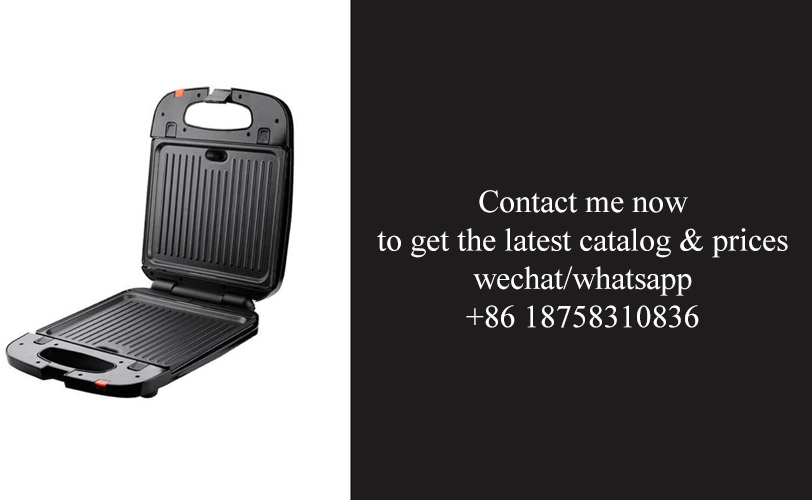
In the ever-evolving world of private label kitchen appliances, packaging has emerged as a pivotal element that not only protects the products but also shapes consumer perception and market success. Innovations in this domain are reshaping how we think about the role of packaging in the private label market.
The use of sustainable materials has become a cornerstone in packaging innovation. Brands are increasingly turning to biodegradable, recyclable, and compostable materials to reduce their environmental footprint. This shift not only appeals to eco-conscious consumers but also positions private label brands as responsible and forward-thinking.
Interactive packaging is another area where innovation is thriving. Incorporating QR codes and augmented reality (AR) features, brands are creating packaging that offers more than just a container. By scanning a label, customers can access tutorials, recipes, or even compare product specifications, all while engaging with the brand in a more dynamic way.
Design has always been a key factor in packaging, and private label brands are pushing boundaries with bold, minimalist aesthetics. Streamlined designs not only make products more visually appealing but also reduce material waste. The sleek, modern look is becoming a hallmark of premium private label products, challenging the perception that private labels are less sophisticated.
Customization is gaining traction in the packaging realm, allowing brands to tailor their packaging to specific market segments or seasonal promotions. This level of personalization can create a stronger emotional connection with consumers, as they feel the products are made just for them. Custom packaging also opens up opportunities for unique branding and promotional strategies.
Functionality is being redefined with smart packaging solutions. For instance, some appliances come with packaging that can communicate with kitchen appliances, ensuring that the product is used optimally. Other innovative packaging solutions include built-in LED lighting for easy product display and moisture-resistant materials that protect the appliance during shipping.
Packaging is no longer just about protection; it’s about communication. Brands are using packaging as a platform to share their story, from the origin of the materials used to the ethical practices of the manufacturing process. This narrative-driven approach not only educates consumers but also builds trust and loyalty.
In the realm of private label kitchen appliances, packaging innovation is also focused on convenience. Single-use packaging, like pre-measured seasoning packets or disposable cookware, simplifies meal preparation and cleaning. Such innovations cater to the busy lifestyles of today’s consumers, making private label products more appealing.
Packaging is also becoming a tool for enhancing the unboxing experience. The thrill of opening a beautifully designed box or discovering a unique packaging feature can create a memorable first impression. This experience-driven approach is particularly effective for online sales, where the physical unboxing is the first tangible interaction with the product.
Lastly, the integration of technology in packaging is on the rise. Sensors that monitor product freshness or temperature can provide real-time information to consumers, ensuring they receive the highest quality product. This level of transparency can differentiate private label brands from competitors and provide a competitive edge.
As the private label market continues to grow, the role of packaging is becoming more crucial than ever. Innovations in this area are not only enhancing the product experience but also redefining what it means to be a private label brand. By embracing these advancements, private label kitchen appliance manufacturers can capture the attention of consumers and carve out a niche in a crowded market.
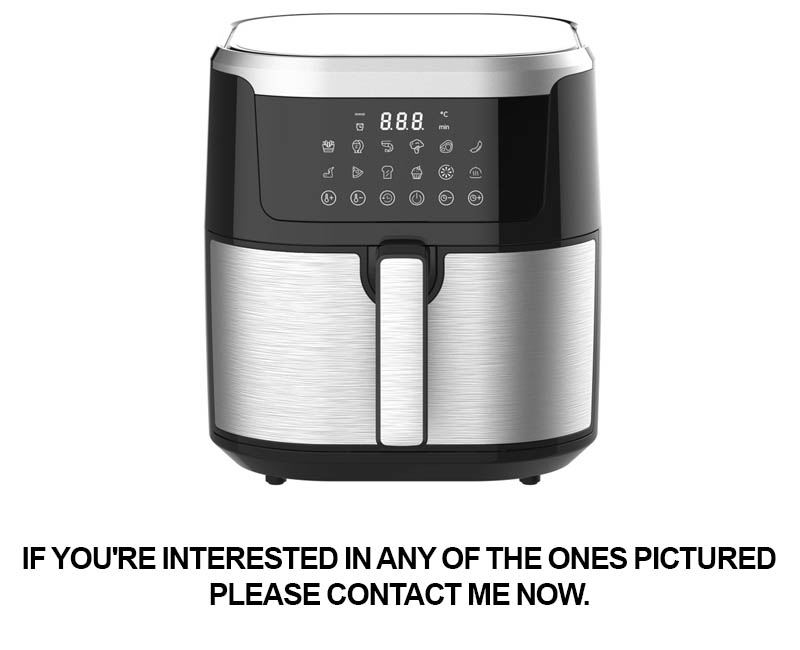
In the competitive world of private label kitchen appliances, packaging plays a pivotal role in shaping consumer perceptions and influencing purchase decisions. Here are some key features that make private label packaging truly effective:
Packaging Design That Stands Out- Vibrant graphics and eye-catching logos can make a significant difference on the shelves. A well-crafted design can evoke emotions and catch the attention of shoppers, making the product more memorable.
Functionality and Usability- The packaging must serve a practical purpose beyond just protection. Features like easy-to-open lids, clear instructions, and space-saving designs can enhance the user experience and differentiate the product from competitors.
Sustainability and Eco-Friendly Materials- Consumers are increasingly conscious of environmental issues. Using sustainable materials and recyclable packaging not only aligns with these values but can also be a strong selling point, appealing to eco-conscious shoppers.
Information Clarity- Packaging should clearly communicate the product’s features, benefits, and specifications. This includes legible fonts, concise product descriptions, and easy-to-understand icons or symbols that help customers make informed decisions.
Brand Identity Integration- Consistency in brand identity is crucial. Private label brands should ensure that their packaging reflects the brand’s personality and values, creating a cohesive and recognizable image across all products.
Interactive Elements- Incorporating interactive elements such as QR codes that link to product demonstrations, customer reviews, or recipes can engage consumers and provide them with additional value.
Space Optimization- In a crowded marketplace, packaging that efficiently uses space can be a game-changer. Compact and flat packaging not only saves storage space but also makes it easier for customers to transport and store the product.
Material Durability- Packaging that is robust and durable ensures that the product remains intact during transportation and storage. This can reduce returns and increase customer satisfaction.
Color Psychology- The use of colors that evoke certain emotions can subconsciously influence purchasing behavior. For instance, warm colors like red or orange might stimulate appetite, while cool colors like blue or green can convey a sense of calm and trust.
Innovative Closure Systems- Features like twist-tops, push-button lids, or one-handed openings can make the product more user-friendly and can set the private label brand apart from generic competitors.
Quality Impressions- The feel and texture of the packaging can create an immediate impression of quality. High-quality materials and finishes can enhance the perceived value of the product.
Safety Features- Incorporating safety features like child-resistant caps or tamper-evident seals not only protects the consumer but also reassures them of the brand’s commitment to quality and safety.
Accessibility for All- Designing packaging that is accessible to all consumers, including those with disabilities, can broaden the customer base. This might include braille labels, clear visual cues, or tactile features.
Customization and Personalization- Offering customized packaging solutions, such as allowing customers to choose from different colors or add personal messages, can create a unique and personalized shopping experience.
In summary, effective private label kitchen appliance packaging combines aesthetics, functionality, and sustainability to create a package that not only protects the product but also communicates its value and fosters a positive brand experience.
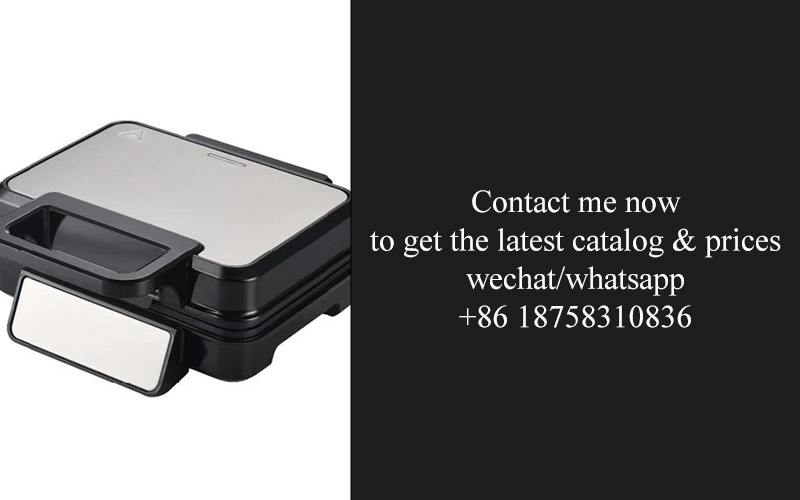
In today’s conscious consumer landscape, sustainability has become a cornerstone of brand identity. For private label kitchen appliance packaging, embracing eco-friendly practices is not just a trend; it’s a strategic move that resonates with environmentally conscious shoppers. Here’s a closer look at how sustainability is woven into the fabric of private label packaging.
The Shift Towards Biodegradable MaterialsPrivate label brands are increasingly turning to biodegradable materials to create packaging that breaks down naturally. This shift is driven by a desire to reduce the environmental impact of their products. From plant-based plastics to compostable films, these materials offer a greener alternative to traditional petroleum-based packaging.
Enhanced Recycling EffortsPackaging that is recyclable is a must-have for private label brands aiming to be eco-friendly. Brands are investing in packaging that can be easily recycled, ensuring that once the product is no longer needed, the packaging can return to the production cycle. This includes using recycled content in the packaging itself and designing it to be separated from the product without difficulty.
Water-Resistant without the PlasticTo minimize plastic usage, private label brands are exploring water-resistant alternatives that don’t compromise on performance. This might involve using water-repellent coatings on paper or cardboard, which can protect the product while reducing the need for plastic film or wrap.
Smart Packaging for Less WasteInnovative packaging designs are reducing waste by being smarter. For instance, modular packaging systems allow for the use of fewer materials, as the packaging can be disassembled and used in multiple ways. Additionally, some brands are introducing “smart” packaging that communicates the best way to recycle or dispose of the product, helping consumers make more sustainable choices.
Minimalist and Functional DesignMinimalism in packaging design is not just about aesthetics; it’s about reducing material use. Private label brands are opting for sleek, minimalist designs that use less material while still being functional. This approach not only looks modern but also aligns with the values of sustainability, as less material means less waste.
Eco-Friendly Adhesives and InksThe adhesives and inks used in packaging are also under scrutiny. Brands are now choosing eco-friendly options that are free from harmful chemicals and volatile organic compounds (VOCs). These alternatives are not only better for the environment but also often safer for the people handling the packaging during its lifecycle.
Consumer Education Through PackagingPackaging is becoming a platform for educating consumers about sustainability. Private label brands are incorporating information about their eco-friendly practices directly onto the packaging. This can include tips on how to recycle the packaging, the materials used, and the brand’s commitment to sustainability.
Certifications and TransparencyConsumers are more likely to trust brands that are transparent about their sustainability efforts. Private label brands are seeking certifications such as FSC (Forest Stewardship Council) or B Corp, which verify that the packaging materials come from sustainable sources and that the brand operates ethically. Transparency in sourcing and manufacturing processes is key to building trust with environmentally conscious consumers.
Collaborations with Eco-Conscious SuppliersTo ensure the sustainability of their packaging, private label brands are forming partnerships with suppliers who share their commitment to the environment. By working closely with suppliers, brands can guarantee that their packaging is produced with eco-friendly practices and materials.
The Future of Sustainable PackagingThe future of private label kitchen appliance packaging is bright and filled with potential. As technology advances and consumer demand for sustainable products grows, we can expect to see even more innovative and eco-friendly packaging solutions. From smart packaging that can track its environmental impact to packaging made from innovative new materials, the possibilities are vast.
In conclusion, sustainability in private label kitchen appliance packaging is more than just a buzzword; it’s a vital aspect of brand strategy. By embracing eco-friendly materials, designs, and practices, private label brands are not only reducing their environmental footprint but also appealing to a growing market of conscious consumers.
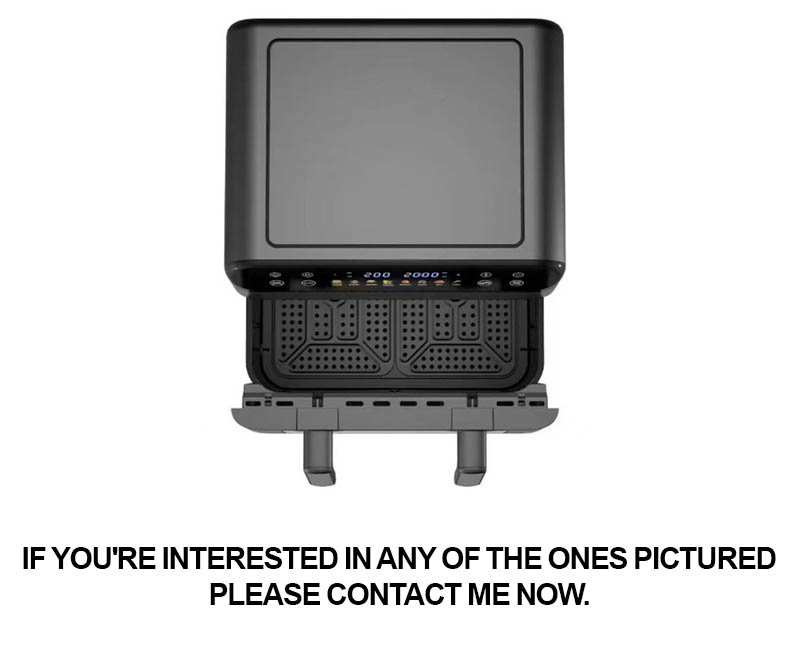
The influence of packaging on the success of private label kitchen appliances is undeniable. It’s the first point of contact for consumers, setting the tone for their perception of the product and brand. Here’s how packaging wields its power:
Packaging as a Brand AmbassadorA well-designed packaging can act as a silent brand ambassador. It communicates the essence of the brand without the need for explicit messaging. The color, typography, and imagery used can subtly hint at the appliance’s functionality, the brand’s values, and even the target demographic.
Functionality and ConveniencePrivate label packaging must not only look good but also serve a practical purpose. Features like easy-to-open lids, clear instructions, and space-saving designs enhance the user experience. These elements can influence the customer’s decision to purchase, especially if they’re looking for a hassle-free product.
Attracting the Eye on Store ShelvesIn a crowded marketplace, packaging plays a crucial role in standing out. The use of vibrant colors, unique shapes, or innovative designs can help private label products leap off the shelf and catch the consumer’s attention. This initial allure can lead to increased sales and brand recognition.
Building Trust with TransparencyEco-conscious consumers are increasingly looking for transparency in packaging. Private labels that opt for clear, recycled, or biodegradable materials demonstrate a commitment to sustainability. This transparency can foster trust and loyalty, as customers appreciate the brand’s ethical stance.
Packaging and Product PerceptionPackaging has a significant impact on how customers perceive a product. For instance, sleek and minimalist packaging might suggest high-quality appliances, while eco-friendly materials might communicate a brand’s commitment to the environment. The perception can directly influence the perceived value and, consequently, the price point at which the product is positioned.
Enhancing Online Shopping ExperienceWith the rise of online shopping, packaging also plays a role in the unboxing experience. High-quality, thoughtful packaging can make a positive impression, even before the customer has used the appliance. This can lead to higher customer satisfaction and increased likelihood of leaving a positive review.
Cost-Effectiveness and EfficiencyPrivate label brands often have to balance cost-effectiveness with quality. Innovative packaging solutions can reduce shipping costs, improve logistics, and minimize waste. For example, using flat-packed boxes can save space during transport and reduce packaging materials.
Impact on Longevity and StorageThe durability and sturdiness of packaging can affect how long a product stays on the shelf. Durable packaging that protects the appliance during transit and storage can prevent damage, leading to fewer returns and a positive brand reputation.
Packaging as a Marketing ToolPackaging is a powerful marketing tool that can convey a wide range of messages. It can highlight new features, offer incentives, or even create a sense of urgency. By leveraging packaging creatively, private label brands can drive sales and differentiate themselves from competitors.
Consumer Engagement and StorytellingPackaging can be used to engage consumers on an emotional level. Through storytelling, brands can share their values, the appliance’s origin, or even the story of the company behind it. This kind of connection can deepen brand loyalty and encourage repeat purchases.
In conclusion, the impact of packaging on private label sales is multifaceted. It influences everything from the initial purchase decision to customer satisfaction and brand perception. As such, private label brands must carefully consider the role of packaging in their marketing strategy to maximize their potential for success.
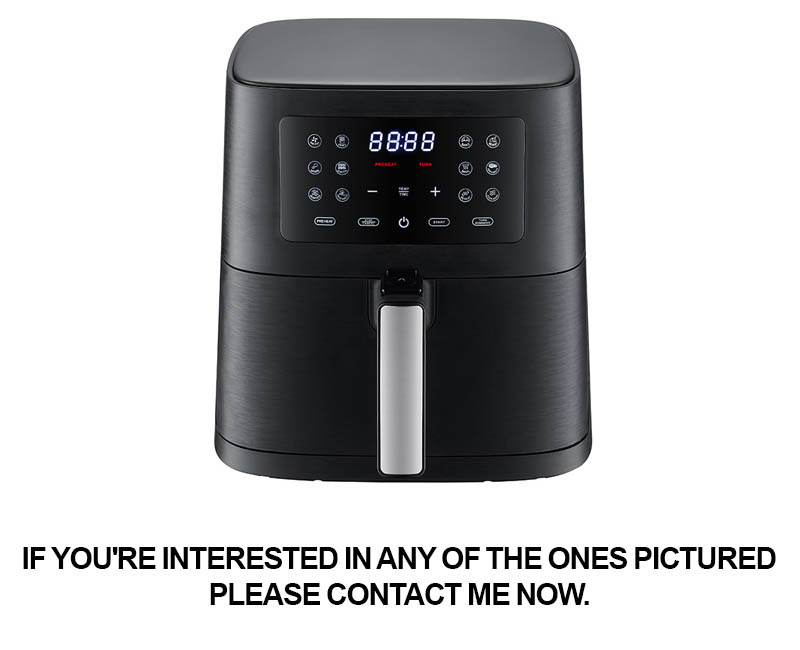
In the realm of private label kitchen appliance packaging, several brands have managed to stand out with their innovative and successful approaches. Let’s delve into a few case studies that showcase the triumphs in this niche market.
Brand A’s Minimalist ApproachBrand A revolutionized the private label kitchen appliance packaging scene with a minimalist design. By focusing on clean lines, neutral colors, and essential product information, they created a packaging that spoke volumes without overwhelming the consumer. This approach not only caught the eye but also resonated with environmentally conscious shoppers, leading to increased sales.
Brand B’s Interactive PackagingBrand B took packaging to a new level by incorporating interactive elements. Their kitchen appliances came with QR codes that, when scanned, provided customers with cooking tips, maintenance guides, and even recipes. This interactive packaging not only educated consumers but also fostered a sense of community and loyalty, driving sales through enhanced customer engagement.
Brand C’s Customizable PackagingRecognizing the diverse needs of their customers, Brand C introduced customizable packaging for their private label kitchen appliances. Customers could choose from a variety of colors, patterns, and even add their own text or logo. This level of personalization made the product feel more exclusive and tailored, resulting in higher sales as customers were more likely to purchase items that reflected their personal style.
Brand D’s Eco-Friendly InitiativesBrand D made a significant impact by focusing on sustainability in their packaging. They used recycled materials, biodegradable inks, and minimal plastic, which appealed to environmentally conscious consumers. This commitment to eco-friendliness not only attracted new customers but also garnered positive media attention, boosting sales through brand reputation.
Brand E’s Storytelling PackagingStorytelling is a powerful tool, and Brand E leveraged this in their packaging design. Each product came with a unique story, highlighting the brand’s heritage, craftsmanship, and the journey of the appliance from design to delivery. This narrative approach created an emotional connection with customers, making the purchase more than just a transaction but an experience, which translated into increased sales.
Brand F’s Smart Packaging TechnologyBrand F integrated smart packaging technology into their private label kitchen appliances. Their packaging included sensors that could communicate with the appliance, providing real-time updates on usage, maintenance, and even suggesting recipes based on the appliance’s features. This technology-driven packaging not only enhanced the product experience but also added value, leading to higher sales and customer satisfaction.
Brand G’s Collaborative DesignsBrand G collaborated with renowned designers to create packaging that was both functional and aesthetically pleasing. This collaboration resulted in unique and eye-catching designs that set their products apart from competitors. The exclusivity of the design, combined with the quality of the appliances, attracted a niche market segment, driving sales through targeted marketing.
Brand H’s Packaging as a Marketing ToolBrand H used their packaging as a marketing tool by featuring customer testimonials and reviews. This approach built trust and credibility, as potential buyers could see the positive experiences of others. The packaging became a conversation starter, encouraging word-of-mouth referrals and ultimately boosting sales.
These case studies illustrate how different strategies in private label kitchen appliance packaging can lead to success. From minimalist designs to interactive features, sustainability to storytelling, and technology integration, these brands have shown that the right packaging can significantly impact sales and customer loyalty.
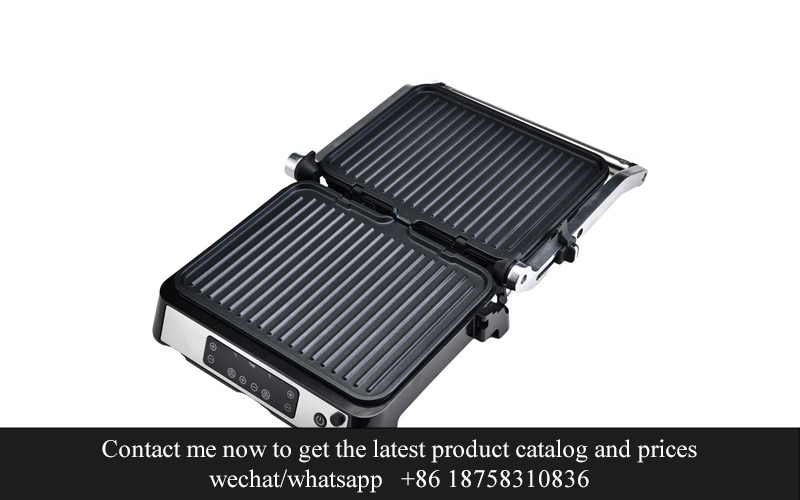
Navigating the complexities of private label packaging can be a daunting task, but with the right strategies and solutions, brands can overcome challenges to create impactful and successful product presentations. Here’s a look at some common challenges and innovative ways to tackle them:
Branding Consistency:Maintaining a consistent brand image across various packaging designs can be challenging. Brands often struggle to ensure that every product reflects their core values and aesthetic.
Creative Solutions:To address this, brands can develop a flexible packaging design system that incorporates consistent brand elements like logos, color schemes, and typography. This system allows for customization while keeping the core brand identity intact.
Material Selection:Choosing the right materials for private label packaging is crucial, as it affects both cost and environmental impact. Some materials may be cost-effective but not eco-friendly, while others might be sustainable but expensive.
Strategic Material Use:One solution is to invest in sustainable materials that offer a balance between cost and environmental responsibility. For instance, recycled materials or biodegradable options can be used without significantly increasing production costs.
Functionality and Durability:Packaging needs to protect the product during shipping and storage, but it also needs to be functional for the consumer. Poorly designed packaging can lead to damaged goods or inconvenience at the point of sale.
Innovative Design:Brands can enhance functionality by incorporating features like protective inserts, easy-open mechanisms, or clear windows that allow customers to see the product inside. This not only ensures product integrity but also improves the customer experience.
Compliance with Regulations:Private label packaging must adhere to various regulations, including food safety standards, labeling requirements, and transportation guidelines. Non-compliance can lead to legal issues and reputational damage.
Compliance Expertise:To manage this, it’s essential to work with packaging suppliers who have a deep understanding of industry regulations. They can provide guidance on compliance and ensure that all packaging meets necessary standards.
Cost Management:Balancing cost-effectiveness with quality is a persistent challenge for private label packaging. High-quality packaging can be expensive, which can impact the overall product pricing.
Cost Optimization:Brands can optimize costs by negotiating with suppliers for bulk orders, seeking alternative materials that offer cost savings without compromising quality, or implementing efficient production processes.
Consumer Perception:Packaging plays a significant role in shaping consumer perception. A poorly designed or unappealing package can deter potential buyers, regardless of the product’s quality.
Brand Storytelling:Effective packaging can tell a brand’s story, creating an emotional connection with consumers. Brands can use packaging to convey their values, origin, or unique selling points, which can positively influence consumer perception.
Inventory Management:Managing inventory of packaging materials can be tricky, especially when demand fluctuates or new materials need to be introduced.
Inventory Systems:Implementing a robust inventory management system can help brands keep track of stock levels, anticipate demand, and streamline the supply chain. This ensures that packaging materials are always available when needed.
Global Expansion:As brands expand into new markets, they may encounter different packaging regulations, cultural preferences, and distribution challenges.
Adaptability:To overcome these challenges, brands should be adaptable, willing to customize their packaging to meet the specific needs of each market. This might involve localizing designs, materials, or even production methods.
In conclusion, the world of private label packaging is multifaceted, filled with challenges that require innovative solutions. By focusing on branding consistency, material selection, functionality, compliance, cost management, consumer perception, inventory management, and adaptability, brands can navigate these complexities and create packaging that not only protects their products but also resonates with consumers and enhances their sales.
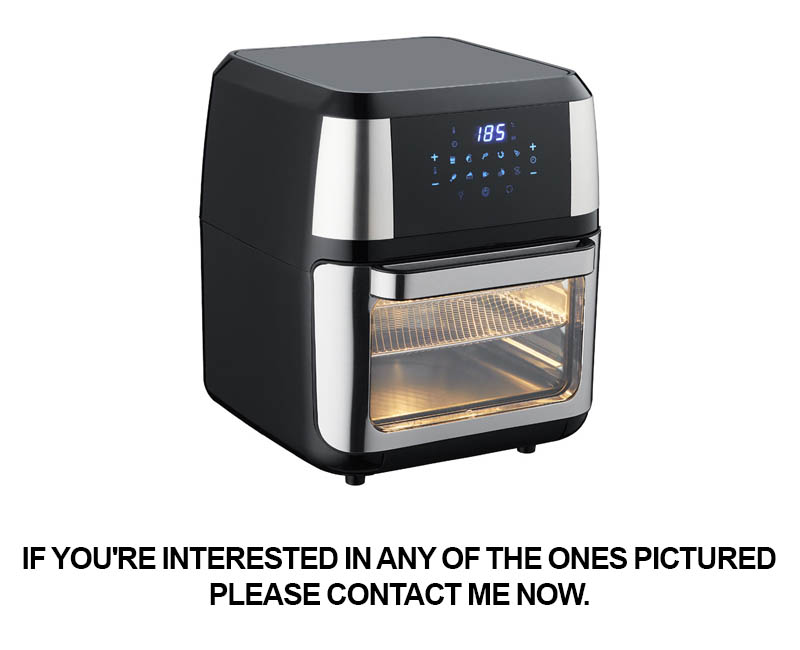
In recent years, the private label kitchen appliance market has seen a surge in popularity, driven by consumers seeking affordable and high-quality alternatives to brand-name products. The packaging of these private label appliances plays a pivotal role in their appeal and success. Here’s a closer look at the challenges and solutions in this dynamic sector.
The challenge of standing out on shelves is immense, and packaging is often the first point of contact between the consumer and the product. Private label brands must navigate this battlefield with innovative designs that not only protect the appliance but also communicate its value proposition effectively.
One common challenge is the balance between cost-effectiveness and sustainability. Private label brands often operate on tighter profit margins than their branded counterparts, which can make investing in premium packaging materials a challenge. However, eco-friendly options are becoming more accessible, offering a solution that appeals to environmentally conscious consumers without breaking the bank.
Another hurdle is the need for packaging that is not only visually appealing but also functional. Consumers expect packaging to protect the appliance during shipping and storage, while also being easy to open and recycle. Solutions include using materials that are durable yet flexible, and incorporating easy-tear features without compromising on the appliance’s integrity.
Branding is also a significant challenge, as private label products must compete with well-established brands that have strong brand recognition. Packaging can serve as a canvas for brand storytelling, using color, imagery, and typography to convey a sense of quality and reliability. The solution lies in creating a unique visual identity that resonates with the target market and communicates the appliance’s features and benefits clearly.
Customization is another area where private label packaging faces challenges. While it’s crucial to offer products that cater to diverse consumer needs, tailoring packaging to each product can be logistically complex and costly. Solutions include using modular packaging systems that can be adapted to various products while maintaining a cohesive brand image.
Designing packaging that is both visually engaging and informative is also a challenge. Private label brands must ensure that packaging not only attracts attention but also provides essential information, such as usage instructions, safety warnings, and recycling instructions. The solution is to create packaging that combines eye-catching graphics with clear, concise language.
In terms of sustainability, private label brands must navigate the complexities of material sourcing and production. They need to find eco-friendly alternatives that are not only sustainable but also cost-effective and readily available. The solution involves partnerships with suppliers who can provide sustainable materials without compromising on quality or price.
Additionally, private label packaging must adapt to evolving consumer preferences and behaviors. As more consumers turn to online shopping, packaging needs to be designed with e-commerce in mind, ensuring that it is suitable for shipping and can be easily showcased on digital platforms. The solution is to develop packaging that is both visually appealing online and practical for delivery.
The future outlook for private label kitchen appliance packaging is one of continuous innovation and adaptation. As consumer awareness of sustainability grows, we can expect to see more brands embracing eco-friendly materials and practices. This shift will likely lead to increased investment in research and development for sustainable packaging solutions.
Moreover, the rise of e-commerce will necessitate packaging that is not only eco-friendly but also designed for ease of online shopping. We may see more use of biodegradable materials, recycled content, and packaging that is designed to reduce waste and energy consumption.
In conclusion, the challenges and solutions in private label kitchen appliance packaging are as diverse as the consumer base itself. By focusing on sustainability, functionality, branding, and adaptability, private label brands can overcome these hurdles and create packaging that not only protects the appliance but also enhances its marketability. The future holds exciting possibilities for innovative packaging that meets the demands of today’s environmentally conscious consumer.